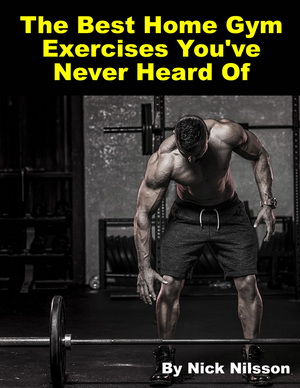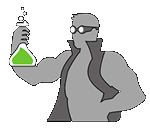The notorious Leg Extension machine...you know this machine...and often the knee pain associated with it.
You also likely know that as good as it can be for the quads, it's not great for the knees. In fact, it can be downright damaging to the knees.
The reason for this are the unbalanced forces on the knee joint. Because of how the exercise works, there is no activation of the hamstrings during the extension, meaning all the force is coming from one side of the joint via the quads. This creates torque in the joint, which is where the damage comes from.
This technique is going to address the lack of hamstring activation, which will help balance the forces during the exercise and help substantially reduce or (ideally) eliminate the torque on the knee joint.
I'll delve into the explanation of how this is going to work after I show you the setup and exercise itself. It will make a lot more sense then.
I do want you to give you a caveat right up front...this setup worked for ME (and my knees) on MY machine. I hope it'll work for YOU on whatever machine you have available but I can't guarantee it. If you want to give it a try, start light, especially if you've had any knee issues in the past, and make sure it feels ok to you before you start to really load it or push the reps.
Do you HAVE to do Leg Extensions for Quadricep Development?
Nope, but it is a useful exercise for targeting the rectus femoris, which is one of the muscles of the quads that ISN'T well worked when doing squat or lunges.
It's also useful for putting some focused workload on the quads without doing squats, lunges or leg presses.
And is this is a weird-looking, completely unnecessary workout hack? Maybe ;)
But in my experience, the more options your have in your training arsenal, the better... and it's really pretty cool how this one works, biomechanically.
How to Do "Fixed" Leg Extensions
To do this one, you'll need two things...a leg extension machine (duh) and a 42 inch band.
This is my recommended source for bands. Use coupon code "RBTFITSTEP" to get 10% off any band packages on this page.

Loop one end of the band around the back of the seat. If your leg extension machine doesn't really allow that, you can fairly easily loop it around your own lower back as well.

You can just let the band end hang freely under the seat for now. Sit on the seat, making sure you're inside the band.
Now lean forward (not TOO far, though, as you'll see in the video...I decided not to edit that part out to show you what not to do), stretch the band and put it underneath your heels.

Once it's set under your heels, grab the sides of the bands and put them onto the seat beside you on both sides. This is critical as we want to get some good tension on the bands to make this work.

Now we're ready to start the exercise, performing it exactly as you normally would.

Extend the knees, contracting the quads hard.

If you want to add even more tension to the bands, just grab the bands in your hands and pull up and back.

This technique works with light weight and it can also be done with much heavier weight very effectively. In this case, I've added a SECOND medium band to the setup and I've got 5 plates on the machine.


This is a weight I normally wouldn't even try to move without the bands. The unbalanced force on the knees would be too much.
However, even with this substantial load, I didn't experience anywhere near the amount of torque in the knees that I normally would feel even with a lighter weight.
How The Banded Leg Extension Fix Works (biomechanics)
So how does adding the band activate the hamstrings and balance the forces in the knee? Here's the rundown...
1. The leg extension exercise is a simple knee extension movement, which means you're straightening the knee. This action is done by the quadriceps.
2. The opposing muscle group to the quadriceps is the hamstrings. It has two major functions. The first is knee flexion (which is the exact opposite movement to knee extension). Due to reciprocal inhibition, this is not a function we can target...that's a fancy way of saying that when one muscle contracts, the opposite muscle is inhibited from contracting in the opposing movement.
Luckily for our purposes here, it's a muscle group that crosses TWO joints...the OTHER function of the hamstrings is hip extension. THIS is the function we'll be targeting.
3. Because the upper legs and glutes are resting on the seat of the bench, there won't be much (if any) actual movement when we activate the hip extension function of the hams. The band will be used to isometrically activate the hams. It's more of an INTENTION to perform hip extension than actually performing hip extension.
4. As you start to extend the knees, the band under your heels starts to stretch. If you take the leg extension machine away from it completely for a second, visualize this as a leg press, done using a band. When you do a leg press with your heels, this puts some loading onto to the hamstrings and glutes via hip extension. So even though the knees are straightening, the hamstrings activate.
5. This hamstring activation from the hip extension intention/isometric contraction is not a tremendous amount, but I found that it IS enough to counterbalance the force in the knee put on it by the quads. It's also the reason why I used two bands for the heavier load.
The key thing to remember is the band(s) MUST be looped around your heels for this to be effective. If the bands are set higher up, you're just adding to the torque on the knees.
Now, I realize this gets a bit deep into biomechanics...the good thing is, though, even if you don't quite see what I'm driving at, it'll still work as long as you do it according to the instructions.
If you DO decide to give it a try, I'd love to get your feedback on it. This is a training problem I've been kicking around in my head for at least 20+ years and I think it's a viable, effective solution.
(Side note...two days after performing the leg extensions in the video, both heavy and light, I'm experiencing ZERO knee pain).
You can also do Leg Extensions using a dumbbell and a bench very effectively as well.
---
Want more unique and challenging exercises to work your entire body with simple equipment? All you need is just a barbell, dumbbells and a bench. Check out The Best Home Gym Exercises You've Never Heard Of!
Share This Page...
Want More Exercises Like This?
You'll find them here...



